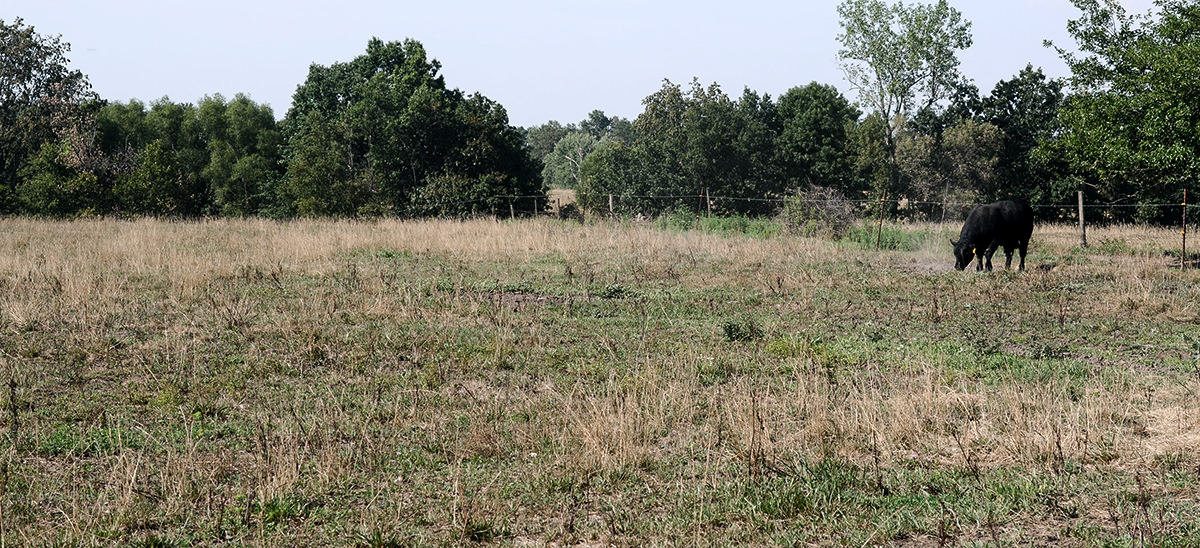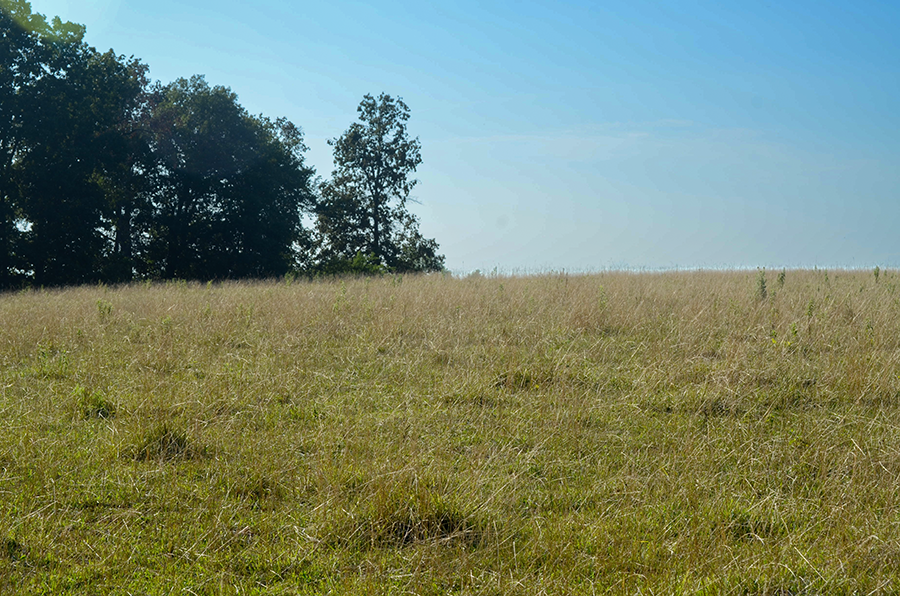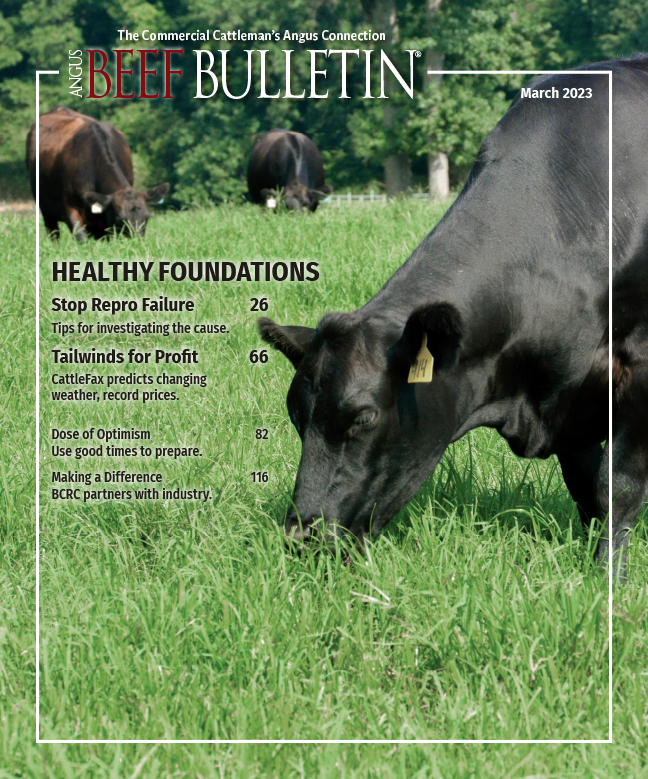
MU Agronomist Gives Post-drought Pasture Renovation Tips
Short-term and long-term options for increasing forage growth.
While fall is the best time to consider pasture renovation, spring is the second-best time, so there is still opportunity to get pastures back in shape for the next season, says University of Missouri (MU) Extension agronomist Tim Schnakenberg.
First, evaluate stand issues. Look at density of desired forages and undesired forages such as weeds. Before you start spraying weeds, look at poor management practices such as incorrect grazing or inadequate fertility.

When renovating pastures, evaluate stand issues. Look at density of desired forages and undesired forages such as weeds. |
Cool-season grass roots establish best in fall. Drill seed in September for best results. Spring establishment requires drilling in February to early March. Avoid tillage.
Fall no-till drilling is most reliable
No-till drilling is the most reliable choice to establish new growth, Schnakenberg says. Seed-to-soil contact is best, and sod holds weeds back when seeds are no-till drilled.
No-till drilling does present some risk, Schnakenberg says. Lack of rain can prevent seeds from sprouting and roots from developing. Also, glyphosate burndown can take two to three weeks to take full effect.
“Glyphosate is a great tool if a complete burndown and renovation is desired,” says Schnakenberg. “However, if the stand is only thin, renovation by no-till drilling into a green stand of grass may be best.”
Short-term options
For quick emergency forages in the spring, drill turnips, spring oats, spring triticale, spring barley and annual ryegrass for feed. Some will also plant forage crabgrass or lespedeza in the spring to take care of gaps in the stand for the summer. Do not drill cereal crops or turnips into good fescue stands, however. Also, don’t interseed into low-fertility stands.
Apply nitrogen to good fescue stands in August to early September to boost stockpiles. Keep cattle off pastures until December and then strip-graze.
“This does not produce short-term forage, but [it] is the most cost-effective practice for winter feeding,” Schnakenberg says.
Long-term solutions
Bring pastures back with permanent forages for the most economical way to graze at least 300 days per year. Most cool-season permanent forages should be fall-planted, but there are summer forages that can be planted in the spring.
Cool-season options for southwestern Missouri pastures:
- Kentucky 31 (KY-31) fescue. Most Missouri pastures already have KY-31 as the base forage. Thicken thin stands with other grasses. Develop a long-term plan to deal with KY-31’s toxic endophytes.
- Novel-endophyte fescue. This contains a nontoxic endophyte and persists better than endophyte-free varieties. The Alliance for Grassland Renewal offers ways to renovate pastures to novel-endophyte fescue. Visit www.grasslandrenewal.org for details.
- Orchard grass. Use as a supplement to fescue with controlled grazing. It helps dilute endophytes in KY-31 fescue, but it does not stockpile well.
- Annual ryegrass. Provides excellent winter feed and lasts later in spring than rye, triticale or wheat. Unfortunately, it provides little if any mid- to late-summer grazing. It is invasive and can take over a fescue pasture quickly. Don’t use near fields intended for wheat for grain, fescue seed production or commercial hay. Avoid herbicides with long residual periods.
Also, don’t try to establish clover when establishing grass, Schnakenberg says. When grass is in good shape, add clover or lespedeza to thicken stands.
Most importantly, do a soil test every three or four years to check nutrient needs. This helps the producer avoid using too much or too little fertilizer. “Few other practices in the hay production enterprise can improve the profitability more than soil testing and following fertility recommendations from your state’s land-grant university,” Schnakenberg says.
Don’t neglect your soil’s pH. When pH is at the right level, you get the best return on your fertilizer investment.
Schnakenberg discourages use of standardized blends of commonly sold fertilizer products. These blends usually cost more than custom-mixed products and may not target needs.
Strategically use animal manures when available. However, nutrients from animal manure can build to high levels. Consider costs and needs.
More tips from Schnakenberg include:
- Split nitrogen applications to reduce risk and increase yields.
- Apply potassium to hay fields when convenient. Apply potash at “off-peak” times when demand for the product and spreading services is low.
- Split potassium applications to avoid waste and leaching when a soil test calls for high levels of it.
Grow your own nitrogen, says Schnakenberg. Legumes can fix 50 pounds (lb.) to 300 lb. of nitrogen per acre. Research by MU Extension agronomist Wayne Flanary shows that adding red and white clover to pastures significantly increases dry-matter tonnage.
Editor’s note: Linda Geist is a writer for the University of Missouri Extension. [Photos by Shauna Hermel.]



